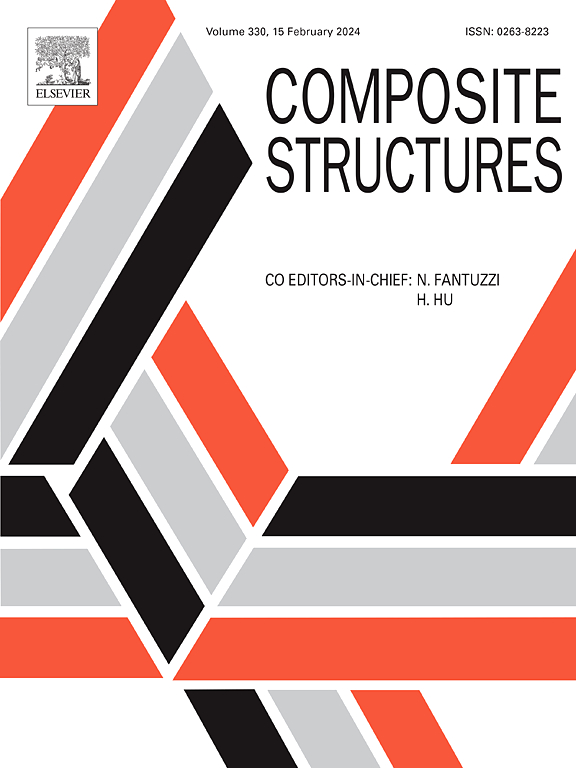A novel explicit porous structure design method
IF 6.3
2区 材料科学
Q1 MATERIALS SCIENCE, COMPOSITES
引用次数: 0
Abstract
Porous Structures(PS) distinguished by their exceptional lightweight, elevated strength, and superior thermal insulation properties, which motivate researchers to find advanced PS based on traditional topology optimization(TO). However, large number of design variables, additional manufacturing constraints, and the lack of geometric information are challenging issues in PS design. To address this, a novel explicit porous structure design method is proposed in this paper. Not only utilizing traditional circular and B-spline(BS) boundary parametric equation, but also proposing adaptive polygonal parametric equation to characterize pore boundary explicitly. As a result, the pore geometry is directly controlled via fewer design variables, and the optimization mathematical model is established without any extra manufacturing or connectivity constraint. The sensitivity of the design variable is derived based on Boundary Evolution Theory(BET). The numerical examples are optimized and simulated to substantiate the effectiveness and capacity of the proposed method.
一种新的显式多孔结构设计方法
多孔结构(PS)以其独特的轻量化、高强度和优异的隔热性能而闻名,这促使研究人员在传统拓扑优化(to)的基础上寻找先进的PS。然而,大量的设计变量、额外的制造约束和缺乏几何信息是PS设计中的挑战问题。为了解决这一问题,本文提出了一种新的显式多孔结构设计方法。不仅利用传统的圆形和b样条边界参数方程,而且提出了自适应多边形参数方程来明确表征孔隙边界。因此,通过更少的设计变量直接控制孔隙几何形状,并且在没有任何额外制造或连接约束的情况下建立优化数学模型。基于边界演化理论推导了设计变量的灵敏度。通过数值算例的优化和仿真,验证了所提方法的有效性和能力。
本文章由计算机程序翻译,如有差异,请以英文原文为准。
求助全文
约1分钟内获得全文
求助全文
来源期刊

Composite Structures
工程技术-材料科学:复合
CiteScore
12.00
自引率
12.70%
发文量
1246
审稿时长
78 days
期刊介绍:
The past few decades have seen outstanding advances in the use of composite materials in structural applications. There can be little doubt that, within engineering circles, composites have revolutionised traditional design concepts and made possible an unparalleled range of new and exciting possibilities as viable materials for construction. Composite Structures, an International Journal, disseminates knowledge between users, manufacturers, designers and researchers involved in structures or structural components manufactured using composite materials.
The journal publishes papers which contribute to knowledge in the use of composite materials in engineering structures. Papers deal with design, research and development studies, experimental investigations, theoretical analysis and fabrication techniques relevant to the application of composites in load-bearing components for assemblies, ranging from individual components such as plates and shells to complete composite structures.
 求助内容:
求助内容: 应助结果提醒方式:
应助结果提醒方式:


